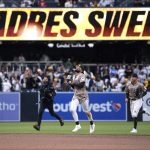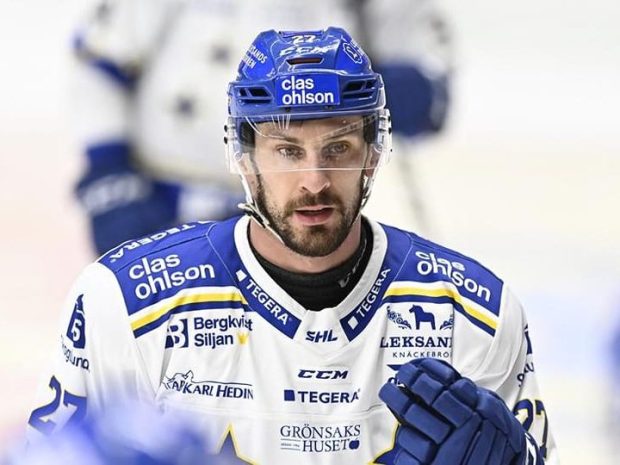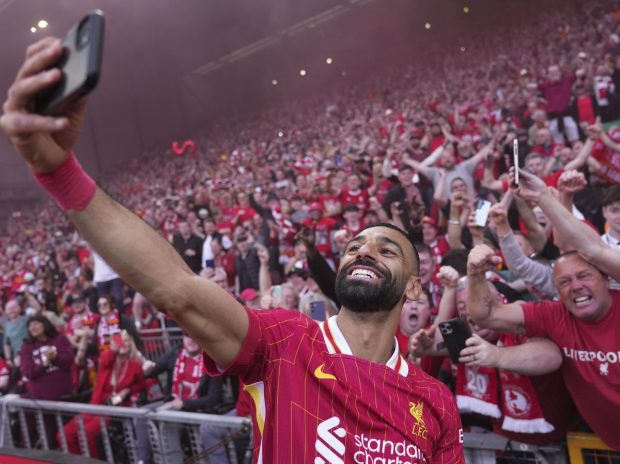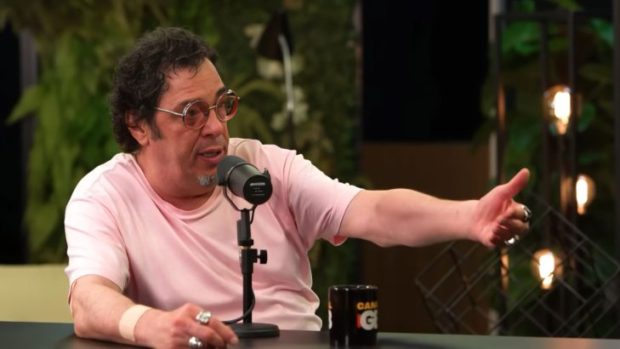
The reviews of Saturday’s NASCAR Xfinity Series race at Martinsville Speedway read like a film with the lowest score on Rotten Tomatoes.
“Absolute garbage.” — Denny Hamlin
“Infuriating. My blood was boiling.” — Christopher Bell
“This racetrack…deserves better.” — Dale Earnhardt Jr.
Embarrassing, disgraceful, shameful … all of those adjectives were appropriately used to describe the “racing” put on display by NASCAR’s second-tier circuit at one of its most venerable tracks.
Advertisement
Or, as one star NASCAR driver put it bluntly via text message after the checkered flag: “What the f— was that?!”
Well, in more polite terms, it was an amateurish display unbecoming of the United States’ second-most-watched domestic racing series.
With seemingly no interest in racing cleanly, many drivers chose to bulldoze their way through each other with no regard for their competitors. They crashed so often, NASCAR officials were forced to throw the caution flag 14 times.
Like toddlers dirtying their room, the frequent crashes created mess after mess for NASCAR to clean up. Of the final 202 laps of the race, an incredible 51 percent were run under the yellow flag — with fans sitting in the stands watching the field slowly putter around behind the pace car. The 104 total caution laps were the most in an Xfinity Series race in 18 years, according to NASCAR historian Seth Eggert.
The average run of actual green-flag racing between caution flags on Saturday? A mere 10 laps at a time.
“Really disappointed in the lack of respect on the track tonight,” Xfinity Series veteran Jeremy Clements wrote on X after making his 504th career start. “It’s a disgrace to this great series. Not many out there raced without just running into the guy in front of them. Not sure what we do to clean it up, but something must be done.”

Aggressive driving caused a slew of wrecks and over 100 laps under caution in Saturday’s Xfinity Series race at Martinsville Speedway. (Logan Riely / Getty Images)
While the sentiment may be unanimous, the what-to-do-about-it part is where people differ.
For years now, the Xfinity Series has been lauded by fans as NASCAR’s best among its three national series (Cup, Xfinity and Trucks). It has become a cult favorite due to its throwback style of racing; the cars have less technology than the Cup cars, the on-track product recalls the nostalgia of 2000s-era Cup racing and the type of excessive spending seen in Cup hasn’t completely pushed out the smaller, independent teams in Xfinity.
Advertisement
The drivers are an ideal mix of up-and-coming young talent, veterans who have settled into a career one step short of reaching the Cup Series and journeymen racers who once tasted the big leagues but didn’t stick.
But because Xfinity Series purses are a fraction of what the Cup Series pays, team owners must often opt for drivers who bring money to buy a seat instead of selecting someone based on talent alone. And it often happens that a number of drivers in the top Xfinity rides come from family money and may not have had to work their way up the ladder in a traditional sense.
For those, the art of working on their own vehicles has been lost. All along the way, they have been able to buy the best of the best — and race with little care for damaging their cars.
It’s someone else’s job to fix it. Someone else will pay for it. They just drive.
“Nobody starts telling these kids at 12 and 13: ‘Respect your equipment, respect that other driver and respect his ability,’” former NASCAR driver Kyle Petty said on Kevin Harvick’s “Happy Hour” podcast this week prior to the Martinsville race. “People think it’s OK to dive into the last corner and take somebody out. People think it’s OK to make it six-wide where it should be two-wide. People think the fans love it, and they think it’s OK, but it’s not OK.”
But there are few repercussions for racing that way, save for some social media blowback or the occasional stern words from a driver angry enough to have a public confrontation. NASCAR likes to call its series “self-policing,” largely governing with a hands-off approach except in the most egregious examples.
Hamlin said penalties similar to the “avoidable contact” ones issued in open-wheel racing could be a deterrent, but that also goes against the core of what NASCAR has been for most of its existence. Drivers know they have fenders, and they are largely encouraged to use them.
Advertisement
Similarly, NASCAR’s championship format is based around a win-and-in system — meaning a single victory can be the difference between an entire season’s success or failure, which heightens the desperation level among competitors near the lead.
Yet there are times when even NASCAR officials feel things have gotten out of hand, and the end of Saturday’s race could be one of them.
As Joe Gibbs Racing driver Taylor Gray neared his first career NASCAR national series victory, less than a quarter-mile from the finish, JR Motorsports driver Sammy Smith decided Gray was not going to win the race. The two had clashed several times earlier, and Smith was infuriated when Gray showed him the middle finger.
So when Gray hit the brakes to slow for the final two corners, Smith kept driving until he plowed into Gray’s rear bumper. Smith’s intention was to knock Gray out of the way so Smith could win, but he miscalculated; the impact was so hard that it created a jam-up behind them and allowed the fifth-place driver, Austin Hill, to shove his way through the chaos for the victory.
Smith and Gray later had a confrontation outside the infield medical center in view of reporters but were kept apart by security officials. Though Smith said he wasn’t proud of his actions and knew he’d be labeled as a dirty driver, he added he didn’t care because he was unwilling to finish in second place — and insisted Gray would have done the same thing to him had the roles been reversed.
That type of mentality was wholly unimpressive to many in the Cup Series garage, which is not immune to controversial incidents but in general maintains a higher standard of professionalism.
“(Saturday) was a joke, and all of those drivers should be ashamed of themselves,” said JGR competition director Chris Gabehart, a former short track racer himself. “… They obviously don’t have a clue. Hopefully they’ll figure it out. But if you want to stand (in victory lane on Sunday), you can’t act like they did.”
Advertisement
While some have decried a lack of veteran leadership within the garage — older drivers who would sit the younger ones down to lecture them about curbing overaggressiveness, as Tony Stewart used to do — others have said the issue is too widespread at this point and NASCAR itself should step in. And that’s in all three series, not just Xfinity.
But Hall of Famer Mark Martin, widely viewed as one of the most ethical racers of his time, posted on X he was sympathetic toward NASCAR for being in a no-win situation based on something that should have been determined by the drivers themselves.
“It hurts the sport to have to be the police of on-track ethics and hurts it if they don’t,” Martin wrote.
There have been glimmers of hope this season that the mentality could change. During a race at Circuit of the Americas in Austin earlier this month, Bell patiently and cleanly raced Kyle Busch for the lead and then said he hoped their respectful battle would reshape the narrative around NASCAR racing.
But watching the Xfinity race on the TV inside his motorhome on Saturday, Bell said, left him livid.
“This year, we’ve had really good races (in the Cup Series),” said Bell, who has won three of them so far. “The kids, they’ve gotta be better than that. Because that was really bad.”
— Additional reporting from Jordan Bianchi
(Top photo of the chaotic finish to Saturday’s Xfinity Series race: Logan Riely / Getty Images)
This news was originally published on this post .












Be the first to leave a comment